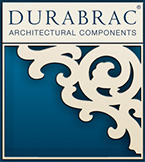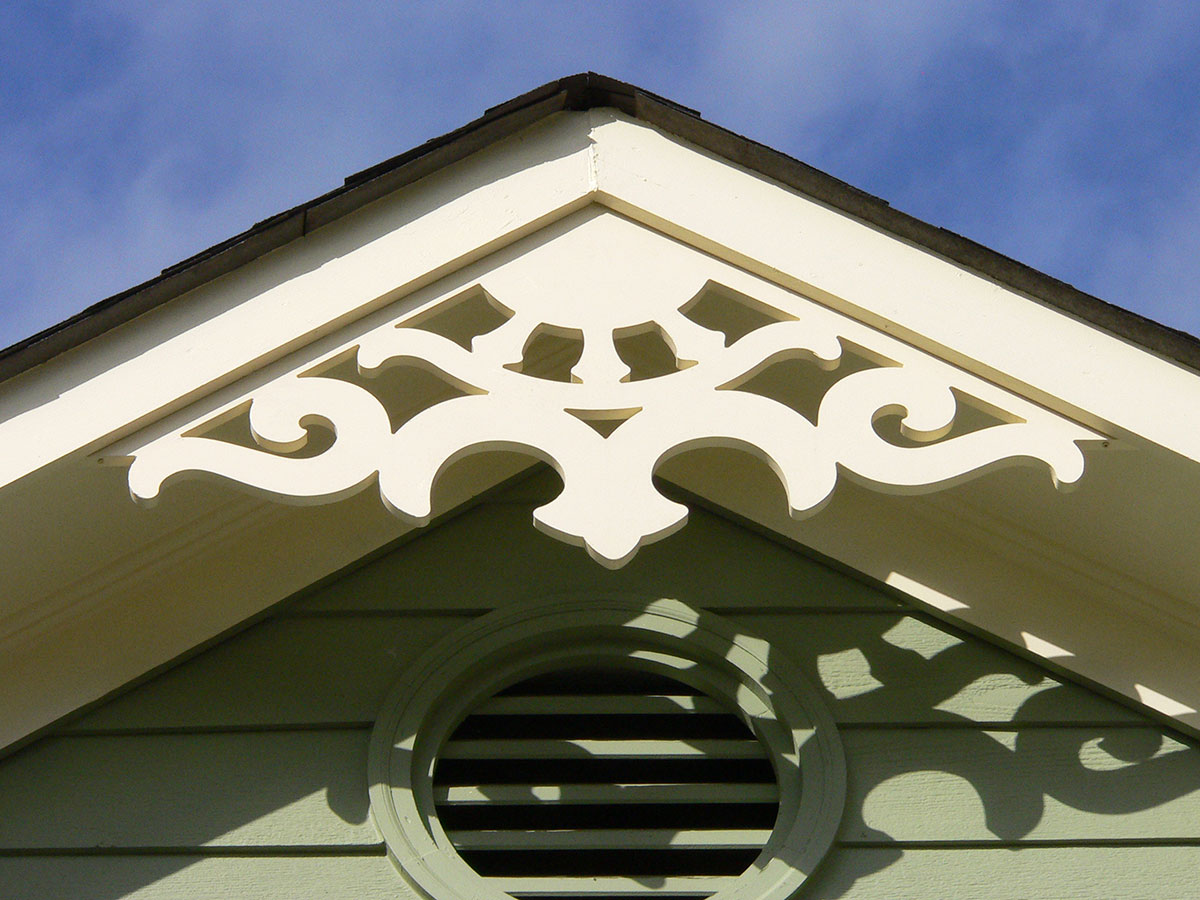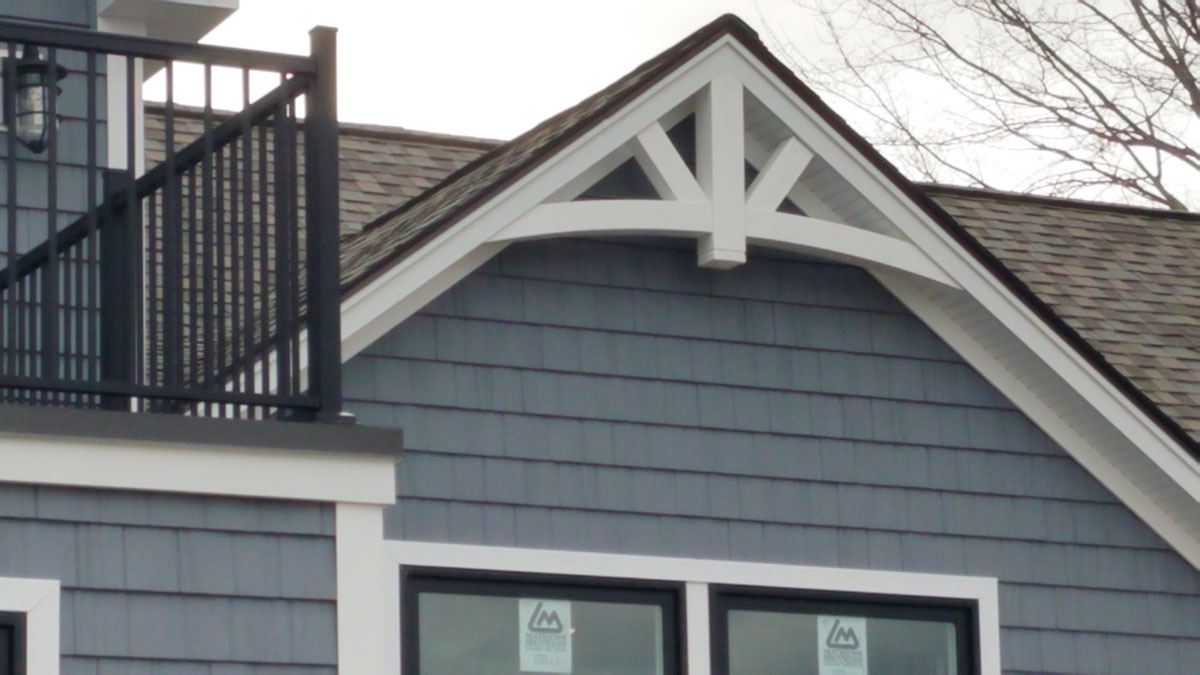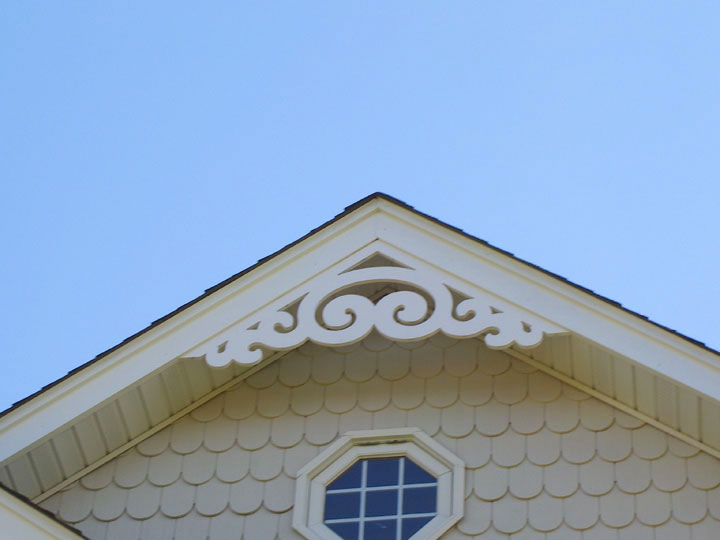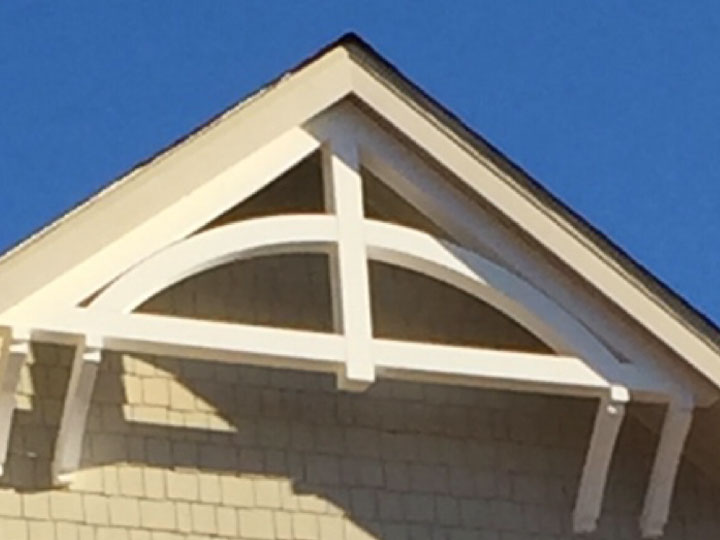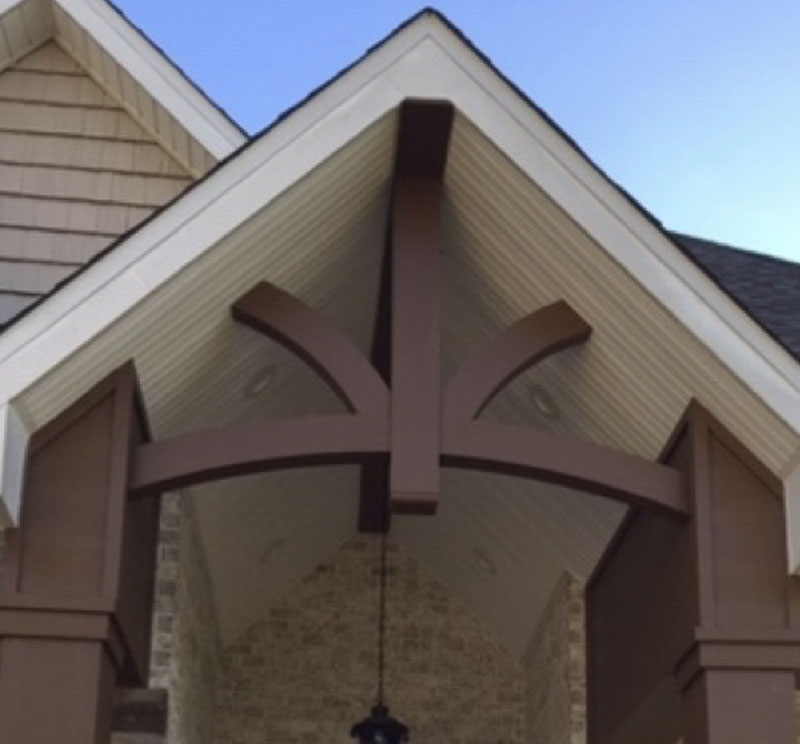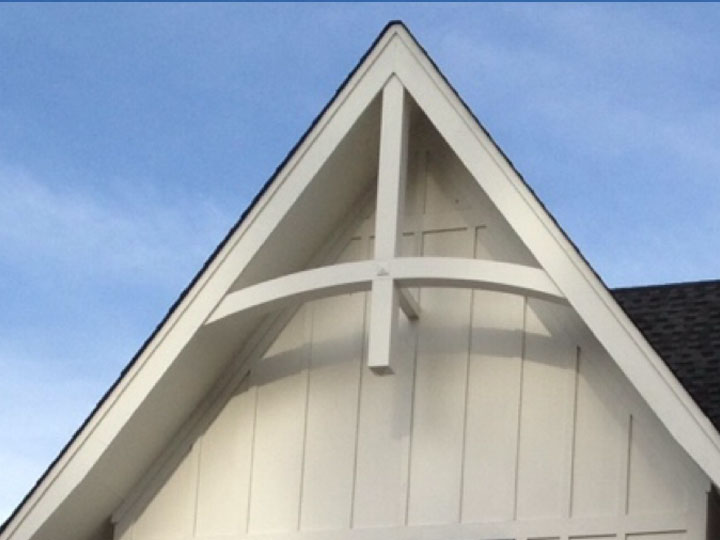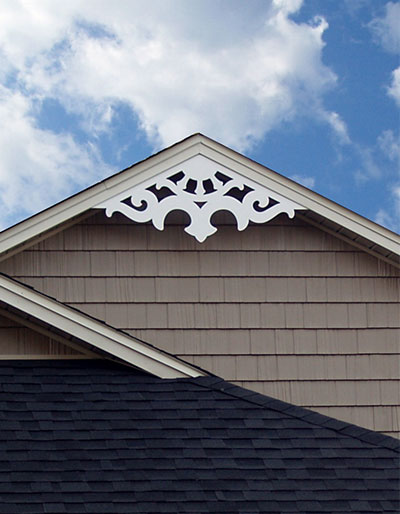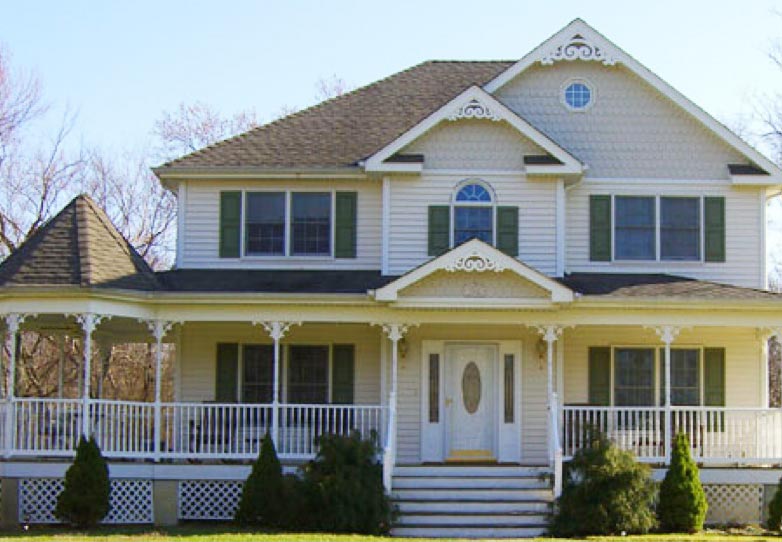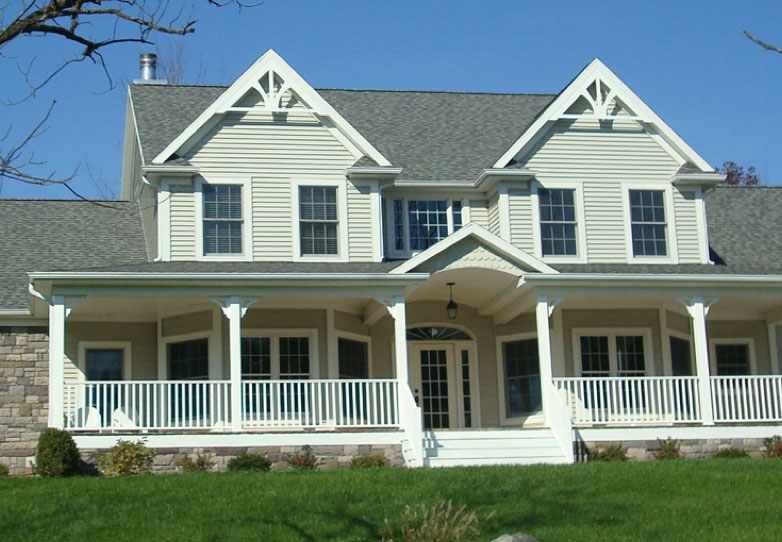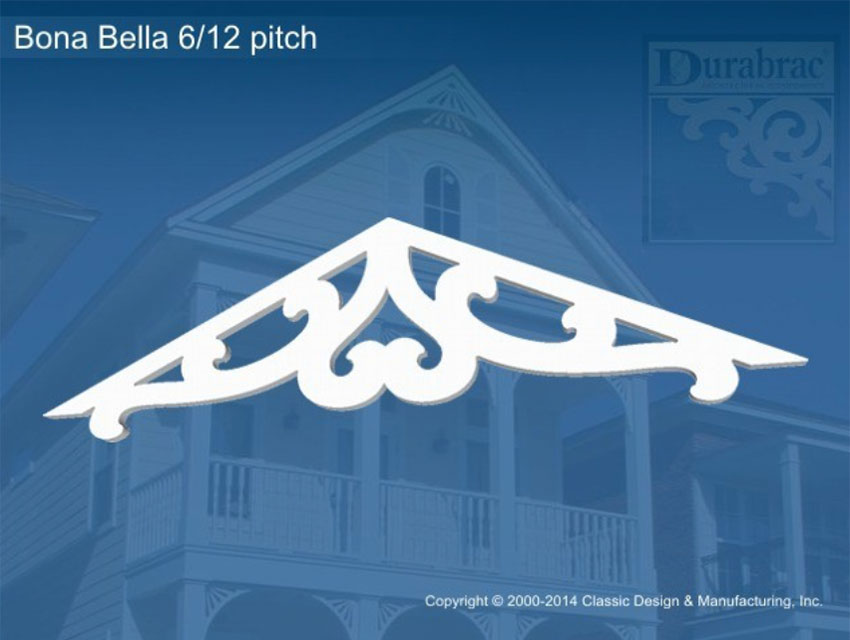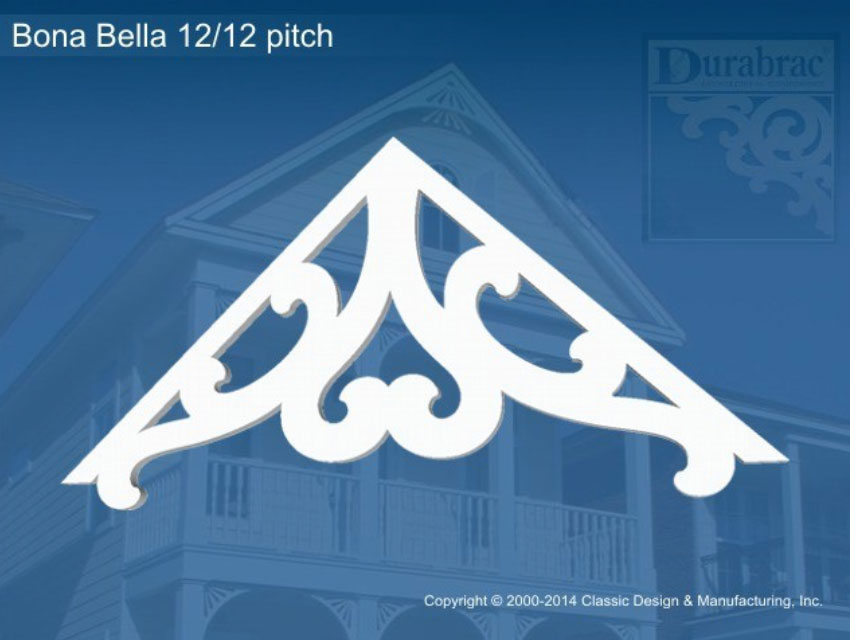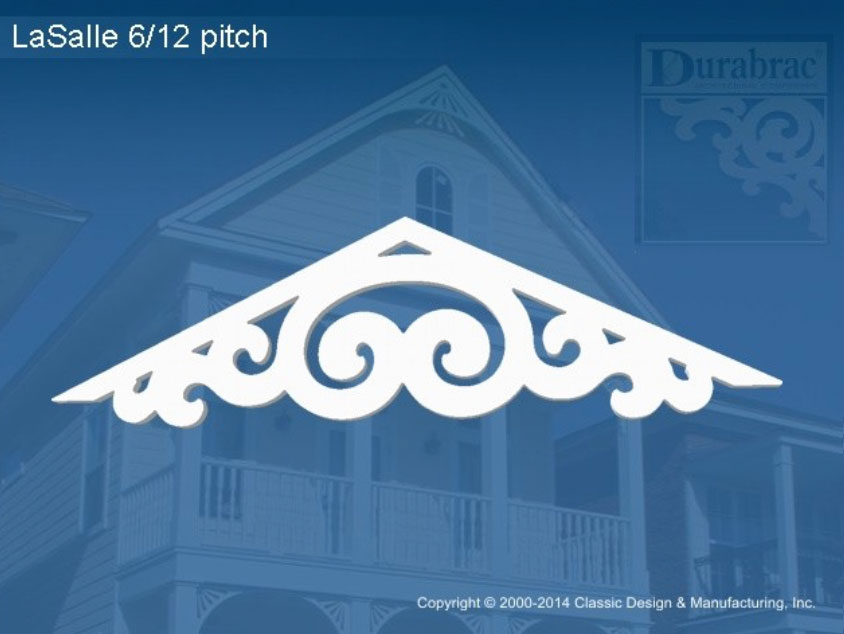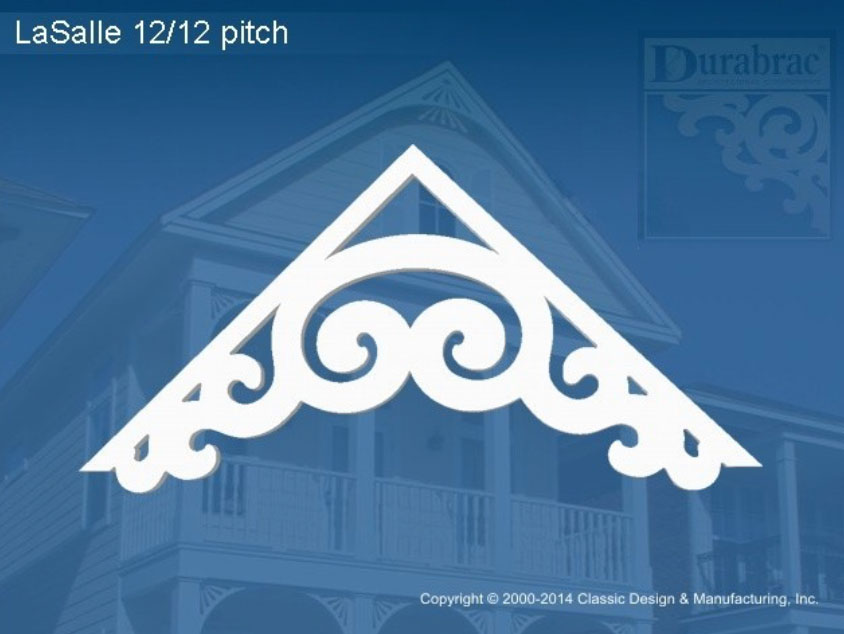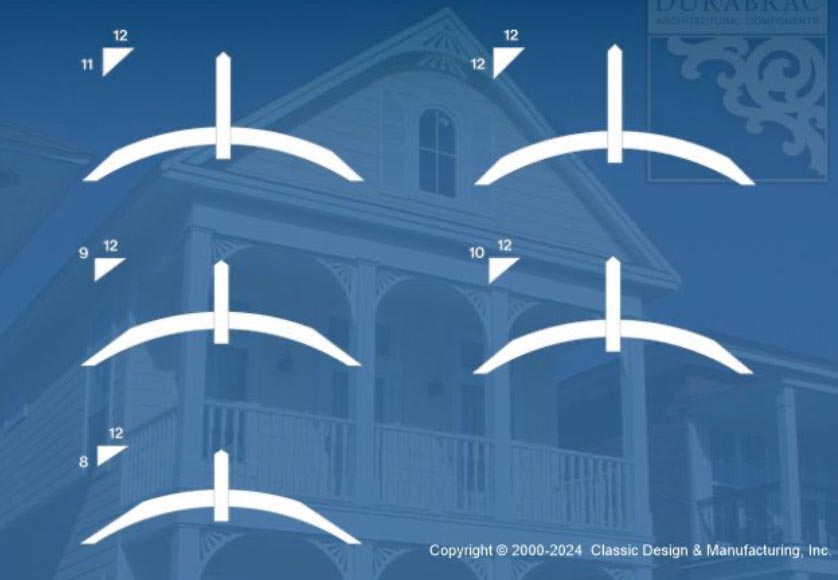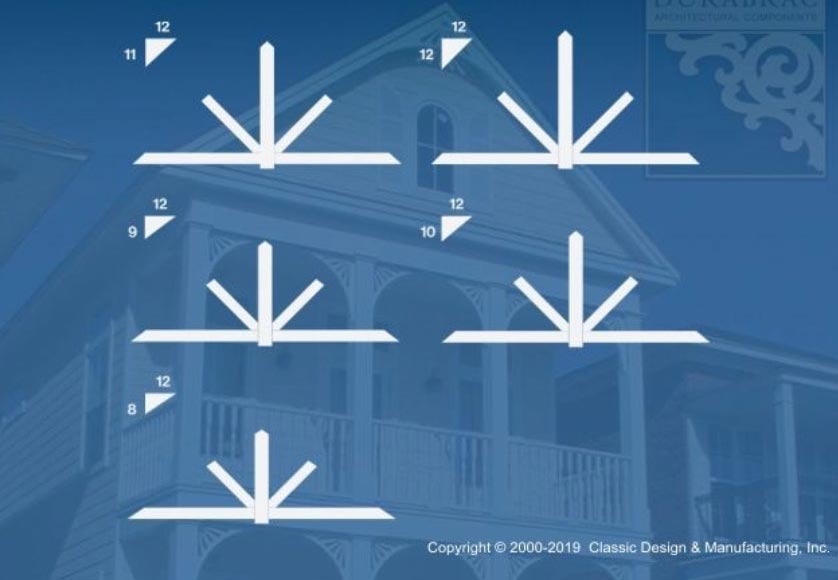Maybe you are working on a new build or perhaps you are renovating.
Either way, gables are most likely a prominent physical feature of your structure. What will you do with that gable? Does the design call for it to be left plain or will the gable include a pediment? How elaborate should the gable pediment be? How big should it be? Should it be made out of wood, plaster, stone or PVC? More importantly, what exactly is a gable and what is a gable pediment?
Let’s start with the last question and work our way back.
What is a gable and a gable pediment?
A gable is the open space in the peak of a roof line—where two roof sections come together. The size of the gable depends on the pitch of the roof (the steepness). They can be quite steep (think high peak of a church) or very wide on a subtle roofline. A gable pediment is the ornamental element that is placed in that open space for aesthetic appeal. Gable pediments are a very old architectural design that date back to Ancient Greece. They were often used on churches and temples over doors and windows, showcasing elaborate artistic designs. The Parthenon is one of the most famous structures that made good use of the gable space.

The Parthenon
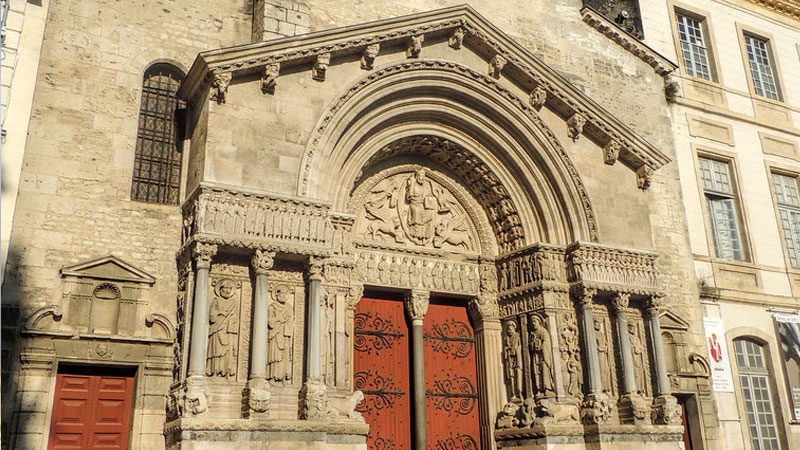
Cathedral Saint Trophime
Over the centuries and up to modern times, gable pediments have been used on various buildings, churches and private homes to add a little extra personality to the structure. These pediments vary in styles that range from Gothic to Gingerbread to Craftsman. Today, most gable pediments are referred to as gable brackets and have much simpler lines.
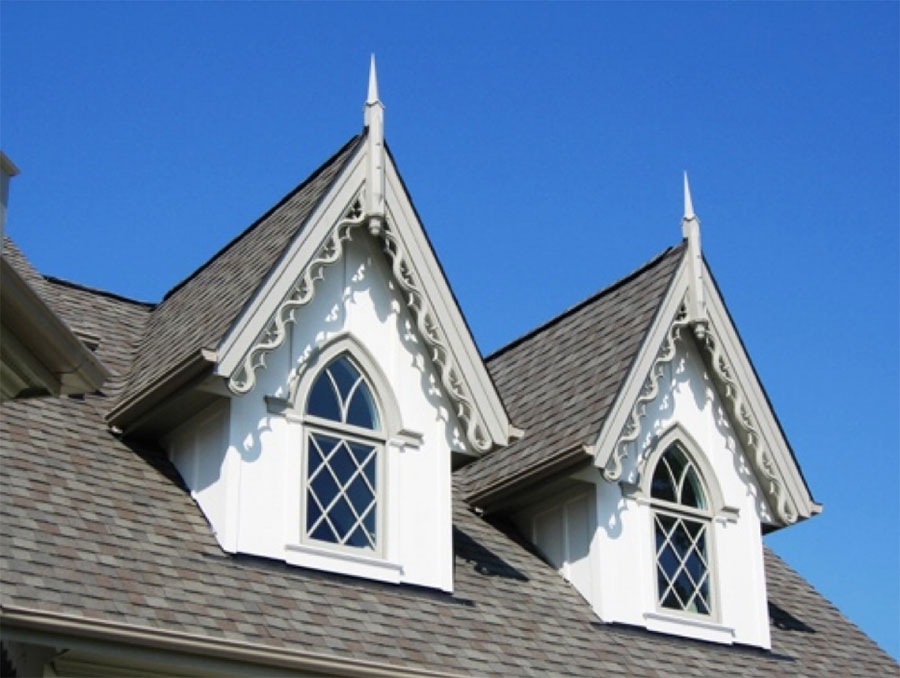
Gothic renovation
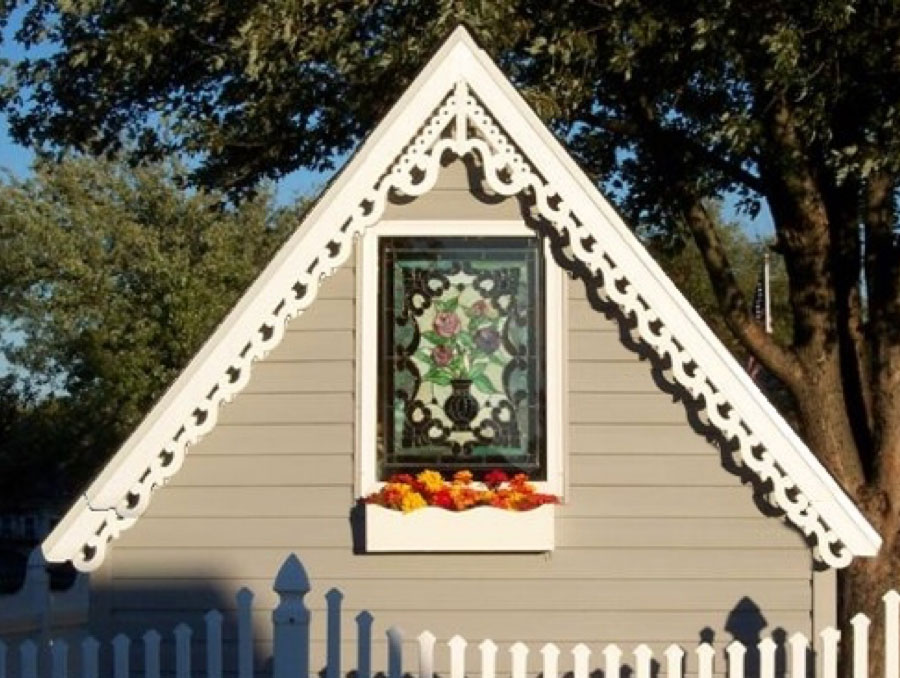
Gingerbread gable
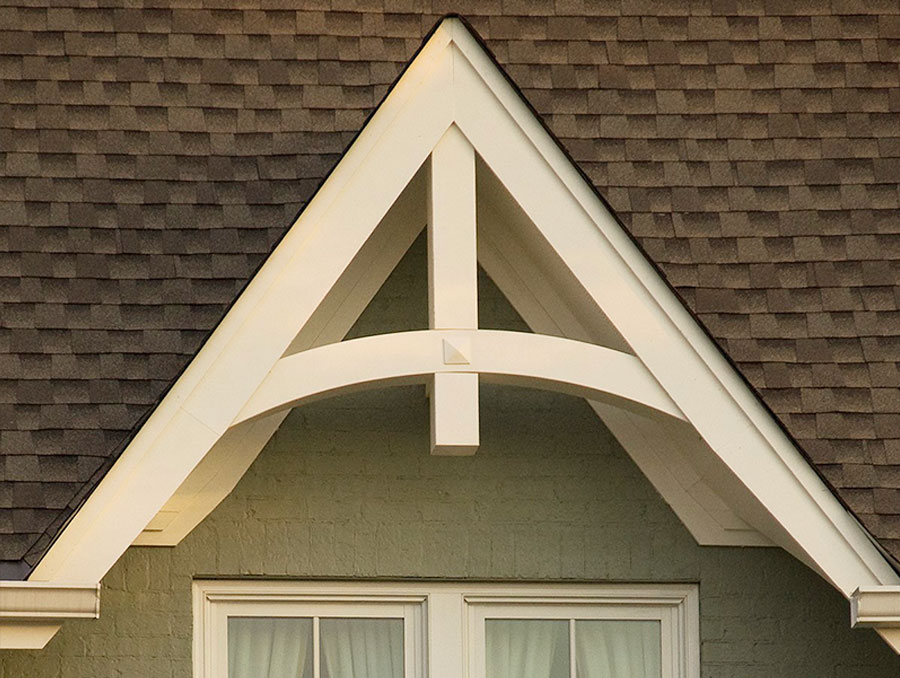
Craftsman-style gable
What style should a gable bracket be and what size?
When considering what style you need, remember the gable is one of the most noticeable and defining characteristics of your building and the bracket (or pediment) placed in it should complement or enhance the building’s overall style. Is it traditional? Is it reminiscent of the old districts in New Orleans with Gingerbread designs or is it a classic Craftsman?
Regardless of your style, you need to carefully consider the size. You don’t want to end up with something that looks too small in your peak or, just the opposite, overbearing and imposing.
To select a suitable size for your gable decorations, you need to take into account the height and distance that they will be viewed from. As the viewing height and distance increase, so should the size of the bracket.
When you look at your home or project from street level, you want to keep the overall visual appearance of the gable decorations even and balanced. A home with multiple gables that are located at different heights and viewing distances will require several different gable brackets in various sizes as the height and distance increase. The different size brackets, when viewed from the street, should have close to the same visual weight and appear to be close to the same size even though the difference in size may be as much as two feet from smallest to largest.
What should the gable pediment (or bracket) be made of?
The answer: it depends on what the design is. When gable pediments were actual works of art either depicting an elaborate scene that told a story or housing full statues of gods, goddesses and saints, the material of choice was either stone or wood because of the carving and sculpting required.
Today, most gable brackets are made from wood or PVC. The lines are simpler and don’t require hand carving. Designs are laid out on computers and sent to routers to cut. Traditional Gingerbread designs with their curves, swirls and arches are quickly, but precisely, cut in a manner of minutes rather than days. Craftsman-style post & beams are cut in very large sizes, constructed together and easily assembled all with the use of modern tools.
So what material should you use for your gable bracket? Wood or PVC? Either is fine for a traditional Gingerbread bracket or a Craftsman-style post & beam and there are pros and cons for both. If you are renovating an older structure, however, and need to remain in the guidelines of the historical society, wood would have to be your choice for authenticity as PVC was not used in the 19th century or early 20th century. If you are not dealing with any renovation confines or you are working on a new build, the choice is yours and the choice of material to use really boils down to style, cost and practicality.
The next time you are out driving around, take a close look at the various private homes and commercial buildings in your area. You may notice that many are designed with architectural brackets or corbels. Can you tell what they are made of? On many structures built within the last 20 years, you may find, to your surprise, that these elements are made of 100% PVC.
PVC vs Wood Comparison
So, why is PVC becoming the preferred choice? What are the benefits of PVC exterior components versus wood? One of the main benefits is PVC has the look and feel of wood but is more durable, hardier and much lighter weight—making installation of a large bracket much easier to handle. PVC brackets are comparable in cost to wood, but require little to no maintenance. They are virtually weather resistant, making PVC brackets great for any climate from the cold North to the wet and humid South. The material can be treated like wood, making it easy to adjust and alter in the field using standard wood-working tools. PVC brackets can be left in their natural white state and do not have to be painted, stained or treated like wood does.
Below is a comparison chart between PVC and wood.
Both have excellent qualities and there are pros and cons to using either.
|
FEATURES |
PVC/VINYL |
WOOD |
|---|---|---|
|
Maintenance Free | ||
|
Fire Rating | ||
|
Water Resistant | ||
|
Must be Painted or Stained |
can be painted or left in natural state | |
|
No Special Tools Required for Installation | ||
|
No Pre-Drilling Required | ||
|
No Special Fasteners or Adhesives Required for Installation | ||
|
Easy to Trim or Notch in the Field | ||
|
Resistant to Damage from Insects, Bees, Birds, etc. | ||
|
Scratch and Puncture Resistant |
surface density is 55lb/ft3 | |
|
Cleans Easily | ||
|
Dry Rot Free |
Technically Speaking
First things first, you need to know your roof pitch before you can order gable brackets. Roof pitch is the angle or degree of steepness of your roof. Pitch is a standard measure of the angle (slope) of the roof. It is sometimes referred to as “rise to run”. For example, a 6/12 (6 on 12) indicates a 6 ft rise in elevation for 12 ft of horizontal length. The higher the first number is the steeper the slope.
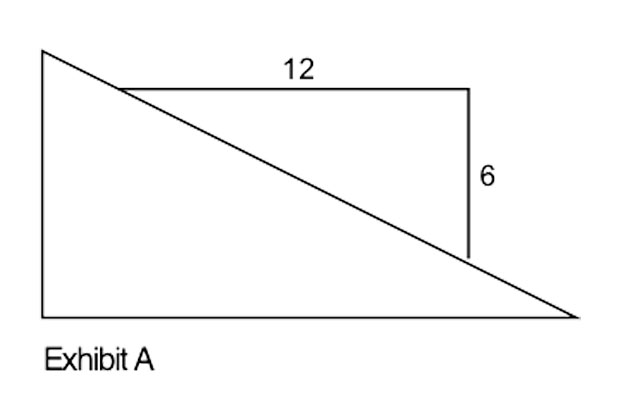
Not sure what your roof pitch is? Is your home new? Do you have the construction plans? If you have the plans, go to the elevation page. There you will find a diagram similar to exhibit A. The 6 is the pitch over 12 as it was built. If you need to accurately determine your roof pitch, you can use this printable pitch gage. This pitch gage is used at the lower part of the gable. Follow the instructions carefully to accurately establish your roof pitch.
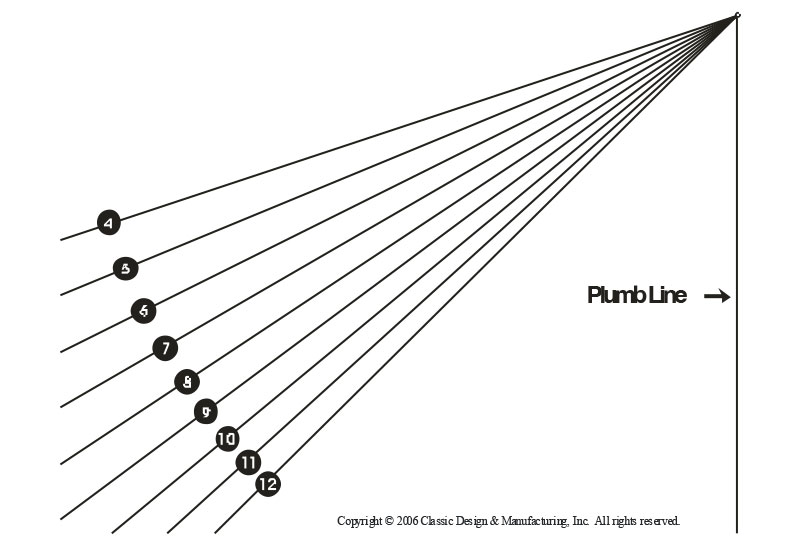
Keep in mind:
- It is common to have different roof pitches on one house.
- When using the pitch guide, observe by eye that the gable is straight all the way to the peak.
- Avoid taking measurements where wires attach to your structure.
In the end…
Whether to install a gable bracket or not is purely a matter of personal style and taste. Once the decision has been made to add a gable pediment and what style is appropriate for your home or building, then it’s pretty much technical from there—making sure to get the size correct based on the roof pitch and visual appeal from the street. Some styles work better in a steep pitch while others are more suited for a subtle pitch. Also, something to consider, Gingerbread or more ornamental designs, can look completely different on two different pitches. Be sure to pay close attention to how the final design will look on your roof pitch when ordering online. Does the website show just one photo or does the design adjust to your pitch to show the variations?
You can see various design shapes and styles and how they change at durabrac.com by choosing your pitch. Simpler post & beam style gable brackets won’t vary too much with pitch as just the ends of center posts are cut to adjust to the angle.
For further technical information and details on gable brackets, as well as installation instructions, please go to durabrac.com.
What Our Customers Have to Say
“Very helpful staff and beautiful products would definitely recommend them.”
– Shayne Bethel
